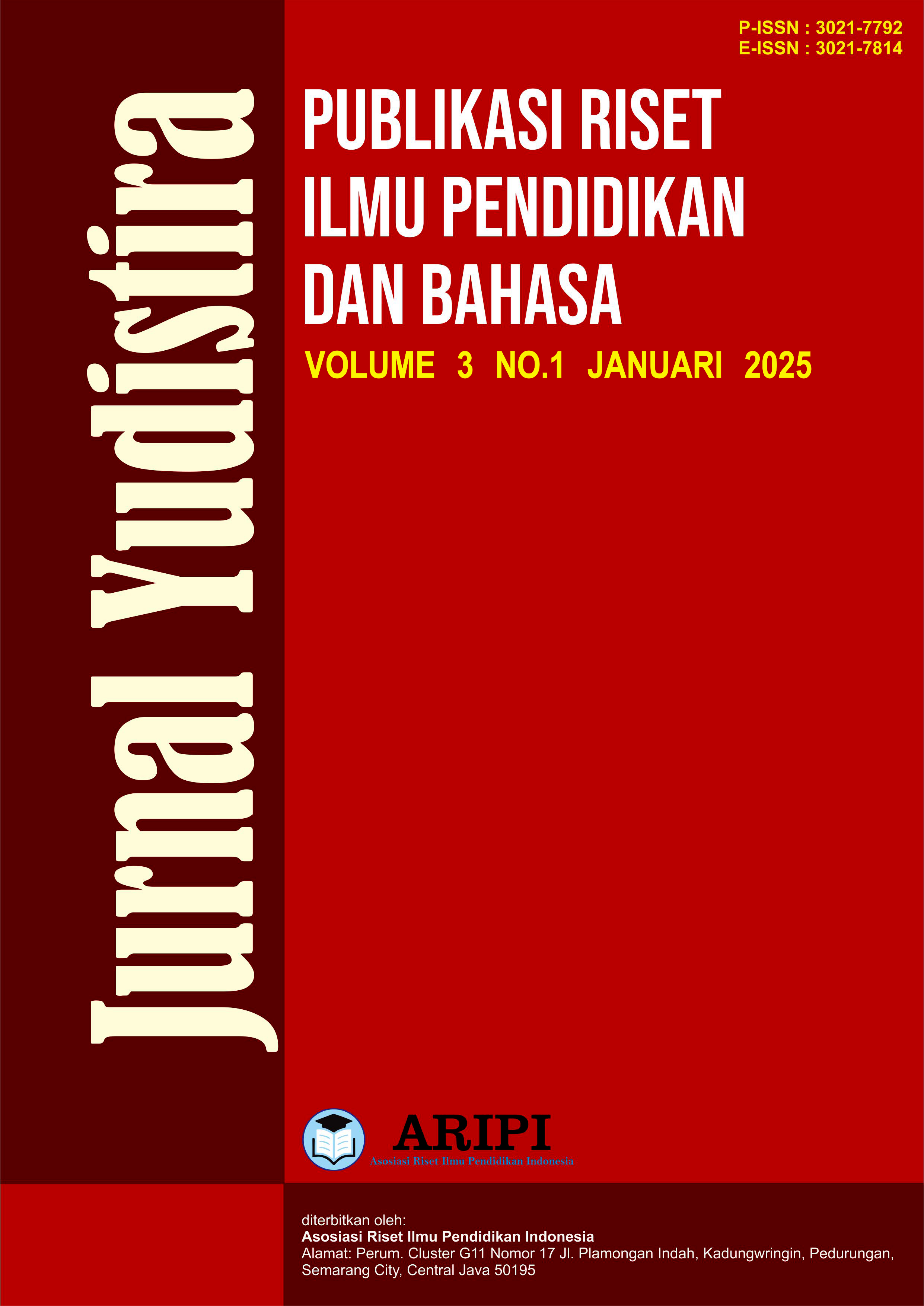Implementasi Pembelajaran Konektivisme Berbasis Kolaboratif Melalui Canva
DOI:
https://doi.org/10.61132/yudistira.v3i1.1578Keywords:
Connectivism, Canva, Digital, TechnologyAbstract
Connectivism is a learning theory that emphasizes the importance of networks and connections in the learning process, especially in the context of modern digital and technology. Learning is no longer limited to physical classrooms, but involves various sources of information spread through the internet network. In this digital era, tools and applications such as Canva are very relevant. Canva is a graphic design platform that allows users to create a variety of visual content easily and collaboratively. Through connectivism, applications such as Canva allow students to work together on design projects, share ideas, and access various visual resources from all over the world. By using Canva, students not only learn graphic design skills, but also develop the ability to collaborate effectively, access information quickly, and integrate knowledge from various disciplines. This reflects the principles of connectivism where learning occurs through dynamic interactions between learners and technology, creating a richer and more connected learning environment.
Downloads
References
Creswell, J. W. (2014). Research design: Qualitative, quantitative, and mixed methods approaches (4th ed.). Thousand Oaks, CA: Sage Publications.
Dirgantara Wicaksono. (n.d.). Desain pembelajaran berbasis teori konektivisme: Kertas kerja evaluasi kurikulum di Prodi Magister Teknologi Pendidikan Universitas Muhammadiyah Jakarta. Jurnal Perspektif, 2(1).
Fatimah, R. A. (2024). Pengaruh kurikulum merdeka dalam penggunaan Canva sebagai media pembelajaran di MAN 1 Kulon Progo. Jurnal Inovasi Ilmu Pendidikan, 2(1).
Jonassen, D. H. (1999). Designing constructivist learning environments. In C. M. Reigeluth (Ed.), Instructional-design theories and models: A new paradigm of instructional theory (Vol. II, pp. 215–239). Mahwah, NJ: Lawrence Erlbaum Associates.
Khan, S. (2012). The one world schoolhouse: Education reimagined. Twelve.
Partnership for 21st Century Learning (P21). (2007). Framework for 21st century learning. Washington, DC: Partnership for 21st Century Learning.
Patton, M. Q. (2002). Qualitative research and evaluation methods (3rd ed.). Thousand Oaks, CA: Sage Publications.
Siemens, G. (2005). Connectivism: A learning theory for the digital age. International Journal of Instructional Technology and Distance Learning, 2(1).
Vygotsky, L. S. (1978). Mind in society: The development of higher psychological processes. Cambridge, MA: Harvard University Press.
Downloads
Published
How to Cite
Issue
Section
License
Copyright (c) 2025 Jurnal Yudistira : Publikasi Riset Ilmu Pendidikan dan Bahasa

This work is licensed under a Creative Commons Attribution-ShareAlike 4.0 International License.






